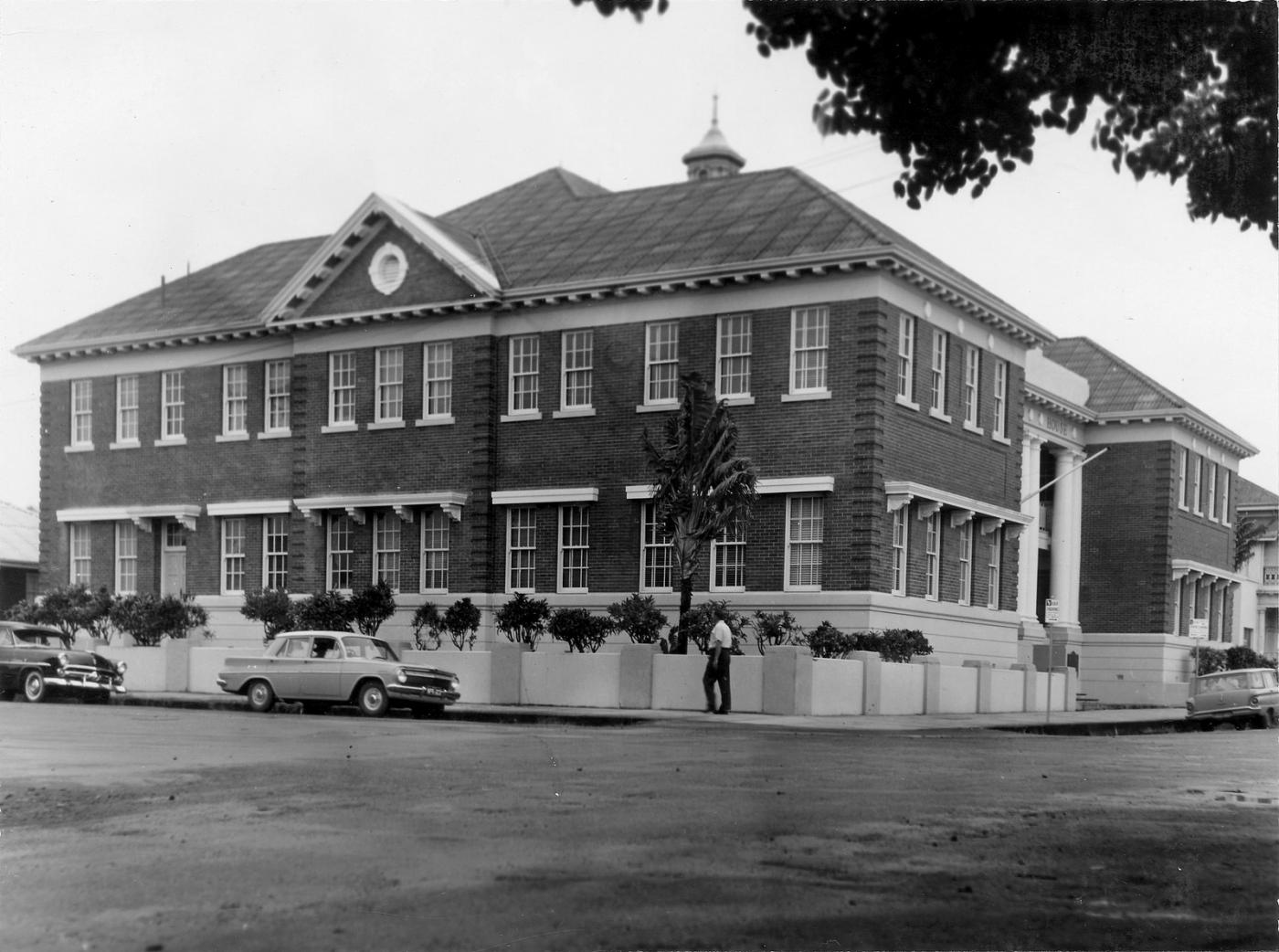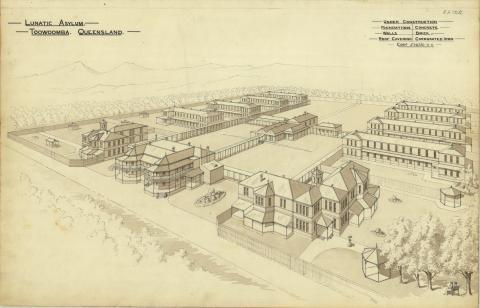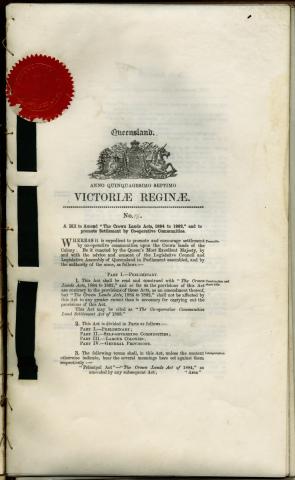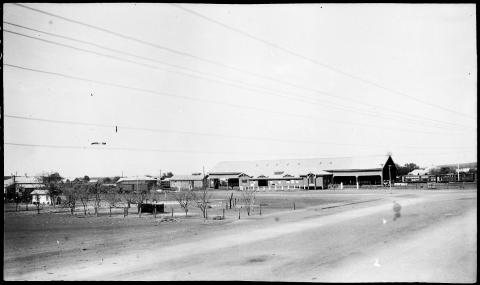
- News of the day
-
Daily Mercury, Wednesday 6 February 1935, page 8
New courthouse.
Commodious building.
Government approves construction
Approval has been given by the Government to the construction of a new Courthouse to be erected upon the Victoria-street frontage.
An announcement to this effect has been made by the Premier (Mr w Forgan-Smith).
These premises, when completed, will accommodate the office of the Police Magistrate, the Clerk of Petty Sessions, and his staff, the Land Commissioner, the Land Agent and clerk, the Public Curator’s agent and clerk, and officials of the Department of Agriculture and Stock. The foundations, etc, of the Courthouse are to be such that an additional storey may be erected at a minimum cost when required.
When the new building is erected the present Courthouse, with suitable adjustments, will be made available to the Police Department as an office and also as sleeping accommodation for single members of the police force.
The proposal for a new Courthouse will ultimately be more economical, provide better and centralised office accommodation, and generally give greater satisfaction to the public at Mackay.
Townsville Daily Bulletin, Saturday 15 April 1939, page 6
Mackay Court House
In these troubled times men are crying out for security under which to carry on their ordinary occupations of life, but there is a lack of that security which is disturbing the minds and souls of all men and women, said Mr Forgan Smith, opening the new Court House in Mackay this afternoon. Whatever the future might hold they must meet it with all the courage and fortitude for which they were capable. Nothing was ever as bad as they sometimes, at a distance, thought it to be, and in the past the courage of men had triumphed over all.
Referring to the fine new Court House building, Mr Smith said it spoke of the permanence of the present form of Government, and also of the policy of decentralisation being carried out in this State.
The police Magistrate (Mr T R Kennedy) presided over the function.
The court is a two storey structure of concrete and brick, with a frontage of 169 feet to Victoria-street, and a depth of 90 feet, housing many government offices, including one for the Premier. The work was carried out by day labor by the Public Works Department, directed by Mr J Binnington, and the cost will be £25,000. The furnishings and fittings are not yet completed.
- Background
-
The site has been associated with the police and judiciary in Mackay since the 1860s. Although buildings were erected and removed during the 19th and 20th centuries as the site developed, the major buildings remain and include the police station, built as a court house in 1886, the current court house, built in 1938, and two brick police residences from 1936-7. A 1960s watch house and keeper's residence are also on this site.
1864 was the year in which a centralised police force under a Commissioner was inaugurated by Act of Parliament. It replaced a system of police districts where constables were under the direction of local magistrates and marked the beginning of a modern police force in Queensland.
A police watch house was built in Mackay in 1865 at the northern end of the current site and a Police Magistrate was appointed to serve the district. In 1872 a simple timber courthouse with a shingled roof was constructed. It was built near the Customs House rather than the police facilities and was inadequate from the beginning. A new courthouse was built in 1873 to the south of the lockup and was soon extended, reflecting the speed with which the area was developing. A police station was constructed in 1878-9 comprising cells and barracks.
The 1880s saw an expansion in police numbers and in court cases as the Queensland economy enjoyed a boom and people poured into the colony. Police numbers were expanded and police and judiciary facilities constructed at such a pace that it became difficult to obtain suitably qualified contractors. The sugar industry was also booming and Mackay was amongst those regional centres where substantial new court houses were erected. In 1884 contracts for a new court house were prepared following the construction of new police stables and lock up keeper's quarters.
The new court house was designed by noted architect J.J. Clark, who was at the time Colonial Architect. John James Clark was born and trained in Liverpool, England. He arrived in Melbourne in 1853 and won a number of architectural competitions, his success in such competitions being a feature of his career. He designed some major public buildings in Melbourne, including the Treasury. He moved to Sydney in 1881 and in 1883 had become Queensland Colonial Architect. Although he left the position in 1885, he was responsible for some important public buildings including courthouses at Charters Towers, Rockhampton and Warwick. They and the Mackay court house were designed in the classical revival style thought appropriate for public buildings intended to convey a sense of stability and dignity, particularly a court house which represented the power of the law. The contractor for the work was Denis Kelleher and the cost on completion, including a strong room and furniture, was £4499/8/7. The court house was a single storey building with rooms extended to each side of the front entrance containing barristers and witnesses' rooms and which were later extended by one room on each side. Behind the bench were rooms for the judge, police magistrates, Clerk of Petty Sessions and Jury. It was opened on 27 May 1886 and the first local sitting of the Supreme Court was held on 15 June 1886.
A new gaol at North Mackay was completed in 1888 and facilities at the police complex and court complex improved with Quarters for the police sergeant proposed in 1889 and police quarters in 1896.
New police residences were designed in 1935. The Inspector's Residence was built in 1936 and the Watch House Keeper's Quarters in 1937, the difference in designation a subtle reflection of rank, although the buildings are very similar. They are unusual in that they are constructed of brick, although this may have been connected with the availability of good local bricks. They have the short passage and asymmetrical room plan typical of 30s houses in the south, but which was modern for Mackay where many houses of a similar size were still built with central passage layouts. The residences are of a better quality than comparable police residences in other regional centres and represent a dramatic improvement from early police accomodation which was often cramped and inadequate. The size and quality of these ancillary buildings reflects not only the prestige accorded to these officers, but the prosperity of Mackay and the importance of its court and police station to the region.
The next phase of the upgrading of the police and judicial complex was the construction of a large and handsome court house to replace the 19th century court house which had long been inadequate. At the time Andrew Leven was Government Architect. AB Leven was trained in Scotland and arrived in Queensland in 1911, working here and in New South Wales until 1914 when he became a draughtsman in the Public Works Department. By 1923 he was Assistant Architect and Chief Architect between 1933 and 1951. For 22 years he was the government representative on the Board of Architects, being Chairman for the last ten years. His office was responsible for the design of a number of public buildings in the Georgian Revival style. The Mackay Court House is amongst the grandest of these buildings with handsome internal detailing including panelled offices. The Court was also designed to accommodate other important government functions such as the office of the Lands Commissioner. The foundation stone was laid on 31 March 1938 by Premier Forgan Smith. The new court house addressed Victoria Street where the first police lockup had been and thus provided the main street with an imposing public building.
The old court house became a police station after the court moved to its new premises effecting a reversal of zones of usage across the complex. It underwent additions and modifications for this purpose in 1940-1, which extended the rear and created an upper level to part of the building to provide accomodation and a recreation room.
Plans were drawn in 1961 for a new cell block and facilities by Architect in Association Colin Tesch and the new watch house was constructed in 1962-3 at a cost of £35,140. It is designed in the International Modernist style developed in Europe about twenty years before, which makes this a late example, though perhaps not in the local context. It was built as part of a surge of post war development in response to growth in the population and economy and following the lifting of restrictions imposed on building during and immediately after World War II. A new watch house Keeper's residence, costing £4387, was built adjoining the existing residence at the same time.
In 1989 the demolition of the police station was proposed, but the people of Mackay strongly supported retention of the building, which underwent refurbishment in 1990-1 as did the 1938 Court House. A large new police building on site includes a watch house, the old one being used now mainly for storage.
Courtesy of Queensland Heritage Register
/149.1883041,-21.1415791,7/450x450@2x.png?access_token=pk.eyJ1IjoicXNhLWRpc2NvLXFsZCIsImEiOiJjamJmdTgyZXEyeWNjMnlxZm8xcmtieHgxIn0.lmT9J5tTPKGuuccQgCVSAg)



